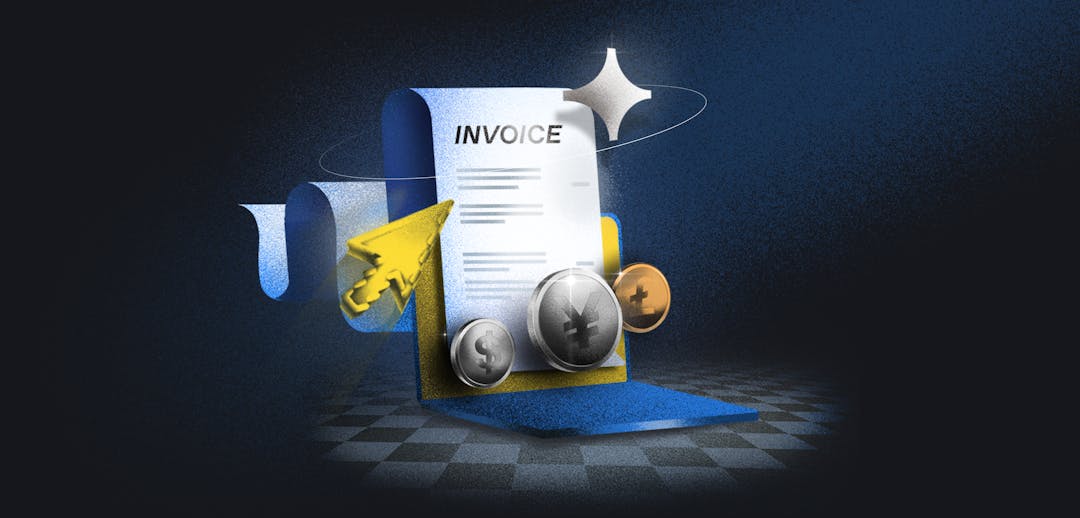We’re here to talk about sales-assisted billing. Why? Because a lot of software companies get pulled upmarket, whether they mean to or not, yet aren’t necessarily sure of the impact this can have on their business and its growth.
So, as the title suggests, let’s split the world of sales-assisted business into the following:
- The good: A different target audience that brings in the bucks, thanks to the new sales motion 💵
- The bad: The billing challenges that come with introducing a sales-assisted approach 😬
- The ugly: Just how much those challenges are negatively impacting your business growth 📉
If you’re more of a video-watcher, feel free to check out one of our recent webinars on just this topic. In this one, our Director of Product, Lucas Lovell and Account Executive, Alex Wilson have an open discussion with Demetre Constantopoulos (Financial Management at Applied) about all of the above, and what we’ve been doing to facilitate sales-assisted motions for our sellers.

The good: the benefits of a sales-assisted motion
Let’s start with the perks of having or introducing a sales-assisted motion into your go-to-market strategy. Why do SaaS businesses do it?
The big reason: you’re tapping into a market that brings in the most money for your business. You’re not going to be able to expand to your full potential without selling to mid-market and enterprise businesses.
Whether you’ve got a purely sales-assisted GTM strategy or you’re opting for the growing trend of the hybrid sales motion, a strategic focus on the mid-market and enterprise segment will benefit from:
- Higher transaction values (inc. ACV)
- More upsell and cross-sell opportunities
- Higher customer lifetime value
- A deeper understanding of your customers
- Increased conversion rates
But with larger contracts and the ever-expanding nature of mid-market and enterprise sector comes a change in your billing processes. It’s time to introduce different ways for your customers to pay and transact, and invoicing is just one of those things.
And as with a lot of processes you come across when growing your SaaS businesses, sales-assisted billing or invoicing does have its challenges.
The bad: the challenges of sales-assisted billing
Cool, you’re bringing in the big bucks and with these larger transactions comes a need to invoice your customers, right?
Invoicing is a process; a process that can be very, very manual.
It splits into various tasks, including:
- Purchase order approval
- Price negotiation
- Tax compliant invoice generation
- Sending the invoice
- Chasing the invoice
- Management and dunning (eg. changes in subscription)
- Payment reconciliation
- Finance and reporting
Long list, right? Then you move on to the next customer, and repeat.
On top of all that, you have to take into account all your customers’ different locations and tax jurisdictions, preferred currencies and payment methods, types of bank accounts, and integrations in your payments infrastructure. You want to receive payments in the way you want to receive payments after all.
With all this variety also comes an issue with unified reporting, or what we call “a single source of truth”. This is particularly prominent in hybrid companies that have both self-serve and sales-assisted billing. In fact, 90% of hybrid SaaS companies that we spoke to said the idea of running and managing their hybrid sales motion in one place was a significant problem.
The ugly: the negative impact on your business growth
The problem with having these types of challenges is that they aren’t just hard to overcome. It's the amount of time and resources that overcoming them can take - two things that expanding software companies can be short on, or want to apply more efficiently elsewhere in their business growth strategy.
That’s why companies start to look for alternatives. When you’re scaling (and scaling fast), the challenges - including those linked to sales-assisted billing - can hold you and your team back, so automated or outsourced solutions become a valuable consideration.
When your team is held back, your business can’t grow at the rate you want it to - or even efficiently grow at all.
Manual processes aren’t scalable. The amount (and the repetition) of the tasks involved in sales-assisted billing is just one factor that can stretch your team, and hiring more people internally sometimes won’t cut it. You’ve still got the issues of time capacity, costs of salaries, issues of human error, and the further costs to correct those errors.
In the webinar we share above, Demetre speaks about how, when Applied wanted to focus on moving into the US market, the invoicing process quickly took up all his time. The time-consuming and manual processes meant he could only focus on transactional and operational tasks in his role of Financial Management, but he knew to help the business grow at the rate it wanted, a dedication to the financial strategy was necessary.
One of the biggest pains for myself was risk. As we grow into the US, for example, there are 10,000 tax jurisdictions. For a small team that is already thinly stretched, tech doing most of the heavy lifting for you is simply invaluable
Demetre Constantopoulos, Applied
The solution: how you can launch your sales-assisted motion with Paddle
As mentioned, companies often lean towards a third-party solution to take on the responsibility and ownership of different aspects of their business, including the complex world of invoicing.
This is one of the many elements of your payment infrastructure that Paddle can handle, giving SaaS companies like yours the opportunity to use their time and resources to their best capacity.
Less head down in Excel spreadsheets for your finance team, and more capacity to focus on the strategy.
Demetre covers this shift in the webinar too, and the benefits of using a platform like Paddle to take the manual processes away:
The thing is, you can’t keep going on using traditional methods by throwing people at it - it’s not smart and it’s not cost-effective. That’s where tech comes in
Demetre Constantopoulos, Applied
Paddle’s new invoicing solution is here to simplify B2B sales for companies (like Applied), with:
- Scalable invoicing creation and delivery
- Reconciliation that scales
- Single source of reliable, real-time revenue truth
- Merchant of record (MoR) and removal of compliance burden
Early access to Paddle’s new SaaS invoicing solution
Paddle has already processed more than $10million through Invoicing, even in our private early access. If you’re a software company with a hybrid GTM strategy or a B2E invoice-only SaaS company, you’re eligible to register for early access to our new invoicing solution.





